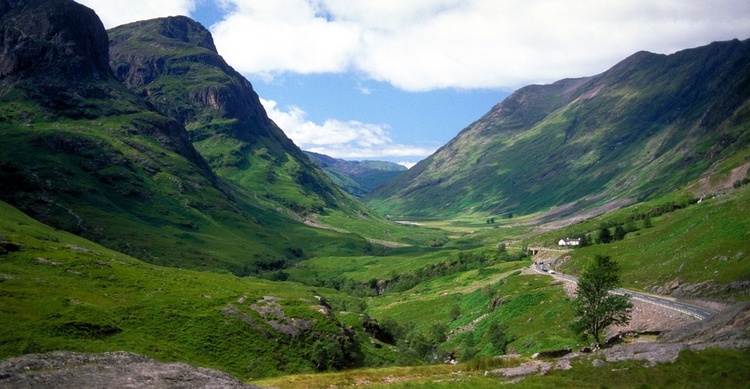
The Sunday Mail

TO the south-east of Mutare the road seamlessly steeps, meanders, descends, ascends and blinds intermittently.
The glittering blue sky is suddenly obscured by a dense fairytale canopy of gnarled acacia, gum and giant heather-trees looming menacingly over the road.
A distant further, mountains and valleys drop steeply away to the broad expanse of interlocking valleys, cascading streams, hillocks and mountains.
Dense pine and conifer plantations on the rolling mountains and valleys give a majestic view of mountain peaks, constantly obscured by wafting mist.
Intermittently, the misty fog vanishes for some moments leaving the rolling moorlands majestically exposed to the tender kiss of sunlight.
After negotiating one of the multifarious arrays of steep ascends, I pulled over our sedan to a rattling halt on the lay-by.
We were up on the Vumba and from where we were, the scenic view of the Vumba was startling – the rolling mountains, high mastiffs and lush green natural forests enticed the eye so much that I could not help but marvel on how elegant and soothing mother-nature was.
From this focal point, too, one could easily mistake Manica — a small town in the neighbouring Mozambique – to be one of Mutare’s eastern suburbs.
On the right, the Burma Valley beckoned in a cacophony of distant cranking cattle bells and singing birds, stretching the eye yonder to the end of the world.
And with the aid of a pair of binoculars it is possible to see the Mozambicans walking in jumbled directions doing their business down the streets of Manica.
On the foot of the rolling mountains lodges are built arbitrarily along the Vumba Botanical Gardens for the convenience of the visitors.
From this high point, they appear as if they were pans in a sanctuary of wildlife forest.
The mountains emit thin films of flitting clouds merging at some point on the horizon above, casting steamy canopy on the majestic Vumba.
Unfortunately, the resultant picture makes it difficult for me to take good pictures to keep with me, good memories of soaking up with this one-of-a-kind place.
Any attempt to capture produces a hazy picture from the resultant humid atmosphere. You have to visit here to experience the love and peaceful side of nature – for pictures would lie if used to interpret this other face of Mutare to someone who has never been here.
Exploring further up and down the steep slopes of Vumba’s lush green gum, pine trees and beautiful botanical gardens that form part of a green thicket, the temperatures suddenly drop.
My friend is forced to reach for a jacket at the back seat of our car and quips: “Very cold, I think this is why this place was formerly called Manchester. It feels like we are in London.”
Apart from the soothing temperatures and the lush foliage from indigenous shrubbery – alluring botanical gardens that constantly suck from the cascading rivers are a must see for those who share with me this love for peace and nature.
What with the discord music of squawking birds in the background – Vumba is surely a perfect destination for a retreat.
Run by the Department of National Parks and Wildlife Management Authority, the Vumba Botanical Gardens are fit for a weekend retreat or even a single day’s retreat, but they will certainly give you a taste of flora and of course, rare fauna.
The Vumba Botanical Gardens and Reserve, are located 32km from Mutare, are established on a portion of a farm formerly known as “Manchester”.
The nucleus of the combined area was bought by Government from Mr F J Taylor in 1957 and was proclaimed a national park in 1958.
In 1960, the name of the gardens was changed to Vumba National Park and again in 1975 to the present Vumba Botanical Gardens.
Known as Manchester Park then, the gardens became a tourist attraction and were visited by thousands during and after World War II. Today, 10 000 people visit the gardens annually from every corner of the globe.
The well-wooded park includes 159 hectares of landscaped gardens built around perennial streams that form a small lake.
Sheltered walks between indigenous fern trees lead to displays of banked hydrangeas, proteas and azaleas, begonias, lilies, aloes, fuchsias, cycads and many other species.
A network of footpaths that enable visitors to explore the interior of the Botanical Reserve has been opened.
Vumba is well endowed with indigenous orchids and ferns. Strategically positioned flowerbeds are encountered as one leisurely takes stock of the gardens.
A superb collection of both the winter/spring and summer flowering varieties has been assembled for the visitors’ enjoyment throughout the year.
To complement the annuals, a herb garden, some roses, proteas, fuchsias, cycads, tea bushes, aloes, camellia, and palm sections have been set up.
The bird-life around the garden and in the reserve attracts a number of visitors.
Several species of birds can be recorded whilst strolling along the many footpaths.
Also found in large numbers is the Samango monkey, which is endemic to the Eastern Highlands. The self-catering lodges in the gardens are very popular with visitors to the area.
A camp site with ablution blocks with hot and cold water systems is available in the garden. Caravan sites with beautiful panoramic views and electric power points also have water borne sanitation.
There is also a swimming pool located by the camping site.
At nearby hotels, a number of activities can also be carried out. Provisions can be found from the nearby shops or hotels in the vicinity.
The Leopard Rock, one of Zimbabwe’s finest hotels, provides riding, golfing, tennis and other holiday activities.
Share the beauty of the places you live in or have visited around Zimbabwe by sending an email to: [email protected] or [email protected]




